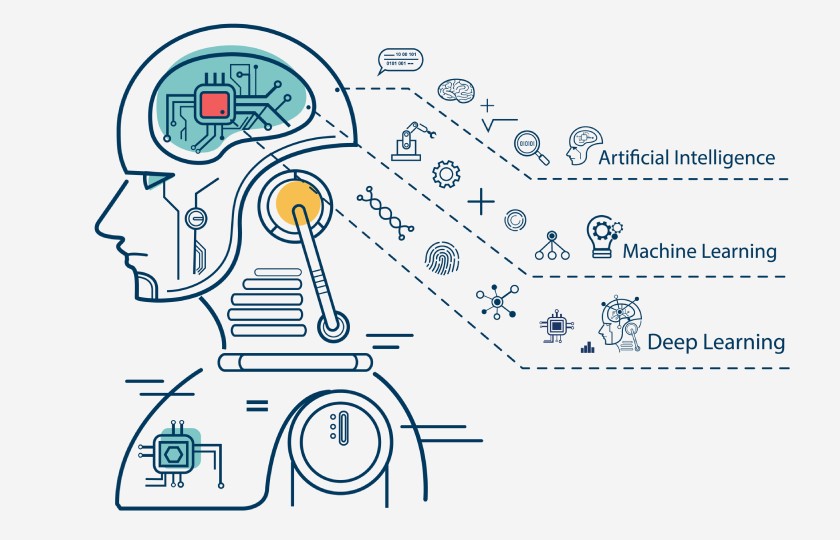Artificial Intelligence and Machine Learning: The Technology of the Future
Introduction
In today’s rapidly evolving digital landscape, artificial intelligence (AI) and machine learning (ML) technologies are increasingly playing pivotal roles. These cutting-edge technologies enable computer systems to analyze vast amounts of data, identify patterns, make predictions, and make data-driven decisions. In this article, we will explore the fundamental concepts of artificial intelligence and machine learning, delve into how these technologies function, examine their wide-ranging applications, and consider their potential to revolutionize the future.
What is Artificial Intelligence?
Artificial intelligence (AI) refers to the branch of technology dedicated to creating computer systems that can perform tasks typically requiring human intelligence. AI encompasses a range of cognitive functions, including learning, reasoning, problem-solving, perception, and language understanding. Through AI, machines are equipped with the capability to perform complex tasks, such as recognizing images, understanding natural language, diagnosing diseases, and even driving vehicles autonomously. Unlike traditional programming, where systems follow pre-defined rules, AI leverages data-driven algorithms that enable computers to learn and improve from experience.
What is Machine Learning?
Machine learning (ML) is a subfield of artificial intelligence that focuses on enabling computer systems to learn from data without explicit programming. ML algorithms analyze data, recognize patterns, and make informed predictions or decisions based on that data. Machine learning is categorized into three primary types: supervised learning, unsupervised learning, and reinforcement learning. In supervised learning, systems are trained on labeled data, allowing them to make predictions or classifications. In unsupervised learning, systems analyze unlabeled data to discover hidden patterns or groupings. Reinforcement learning involves systems learning from trial and error by interacting with an environment and receiving rewards or penalties based on their actions.
Applications of Machine Learning
Machine learning techniques are widely applicable across various industries and fields. Some key applications include:
- Healthcare: In the healthcare sector, machine learning is used for disease diagnosis, drug discovery, personalized treatment plans, and patient care management. For example, ML algorithms can analyze medical images to detect abnormalities, predict patient outcomes, and identify the most effective treatments based on patient history.
- Financial Services: Machine learning plays a crucial role in risk assessment, fraud detection, portfolio management, and algorithmic trading. Financial institutions use ML models to analyze market trends, detect fraudulent transactions, and optimize investment strategies.
- Automotive Industry: In the automotive industry, machine learning technologies are integral to the development of autonomous vehicles, advanced driver assistance systems (ADAS), and predictive maintenance. ML models process data from sensors, cameras, and other sources to enable vehicles to navigate, avoid obstacles, and make real-time decisions.
- Retail Sector: In the retail sector, machine learning is utilized for customer segmentation, sales forecasting, inventory management, and recommendation systems. Retailers leverage ML to personalize marketing campaigns, optimize stock levels, and predict consumer behavior to enhance customer satisfaction and increase sales.
- Education: Machine learning is increasingly being applied in education for student performance analysis, personalized learning experiences, and predictive analytics. Educational institutions use ML to assess student progress, tailor instructional content, and predict academic success, thereby improving learning outcomes.

Future Potential
Artificial intelligence and machine learning technologies are continually advancing, offering the potential for groundbreaking innovations and solutions. As these technologies become more sophisticated, their integration into our daily lives is expected to deepen. In the coming years, AI and ML are likely to revolutionize industries such as transportation, healthcare, finance, and entertainment. For instance, autonomous vehicles are poised to transform urban mobility, while AI-driven medical devices could enhance diagnostic accuracy and patient care. Additionally, AI and ML are expected to drive the development of smart cities, improve energy efficiency, and contribute to solving global challenges such as climate change and public health crises.
The potential of AI and ML extends beyond practical applications. These technologies are also set to redefine how we interact with machines and data. With advancements in natural language processing, computer vision, and reinforcement learning, AI systems are becoming more intuitive and capable of understanding and responding to human needs. This shift towards more intelligent and autonomous systems will likely lead to the creation of new industries, job opportunities, and economic growth. However, with this growth comes the need to address critical challenges, including data privacy, algorithmic bias, and ethical considerations.
Conclusion
Artificial intelligence and machine learning have firmly established themselves as cornerstone technologies in the modern era, driving innovation and transformation across various sectors. The potential for these technologies to continue reshaping our world is vast, promising new solutions to complex problems and creating opportunities for growth and advancement. However, as we harness the power of AI and ML, it is crucial to address the ethical, privacy, and security challenges that accompany these developments. By fostering responsible AI practices and ensuring that these technologies are developed and deployed with transparency and accountability, we can maximize their benefits for humanity and pave the way for a future where AI and machine learning contribute positively to society.




